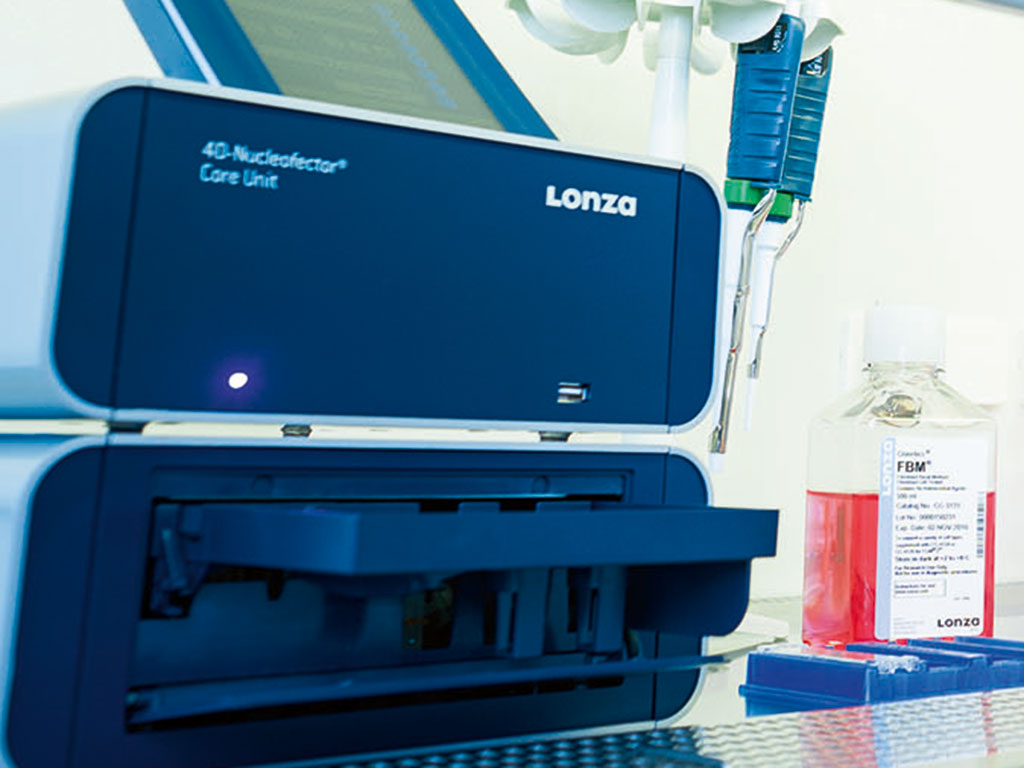BCL11A erythroid enhancer, is responsible for the repression of fetal hemoglobin and for the activation of beta-hemoglobin. Introduction of point mutations in the core sequences of the BCL11A erythroid enhancer region causes de-repression of HbF in adult cells and reduced expression of the sickle-cell beta-hemoglobin and formation of polymerized sickle-hemoglobin.
Using this approach allows to use CRISPR / Cas9 based NHEJ repair to introduce point mutations into the BCL11A enhancer, without the necessity of co-transfection of a DNA template as it would be required for a repair of the effected beta-globin gene
Via multiple optimization steps including testing of different sequences and sources of sgRNA, different Cas9 : sgRNA ratios a reduction of nearly 55% of BCl11A RNA-levels could be obtained with a potent induction of γ-globin expression in CD34+ HSC from beta-thalassemia patients in the range of 33 – 89%.
Further improvement of Indel frequency up to 98% was obtained by using a SpCas9 protein with 3NLS .
To test if gene-editing of BCL11A enhancer could indeed improve symptoms in patient cells, the authors edited CD34+ HSC from beta-thalassemia and SCD patients and they could show that:
- in vitro differentiated erythrocytes from SCD did resist sickling
- in vitro differentiated erythrocytes from beta-thalassemia patients showed higher frequency of enucleation, large size and circular shape erythroid cells due to improved globin chain balance.
Edited HSC from Beta-thalassemia and Sickle-cell donor did engraft into immunodeficient mice with robust induction of the gamma-globin expression in erythroid cells and were able to support secondary transplantation consistent with gene editing of self-renewing, long-term engrafting HSC.
Currently, several clinical trials using different strategies (BLC11A enhancer disruption, repair of beta-globin gene etc.) are ongoing and first promising results could be obtain. I am excited to hear about results of those clinical trials and further steps taken to improve the life of patients effected by those diseases.
Written by SST


